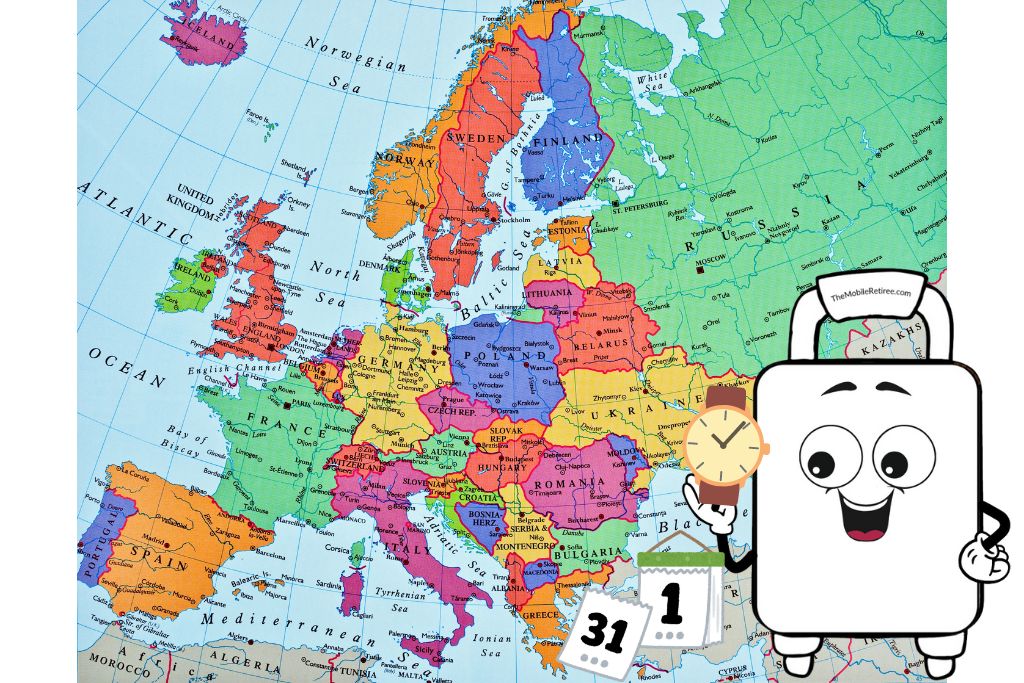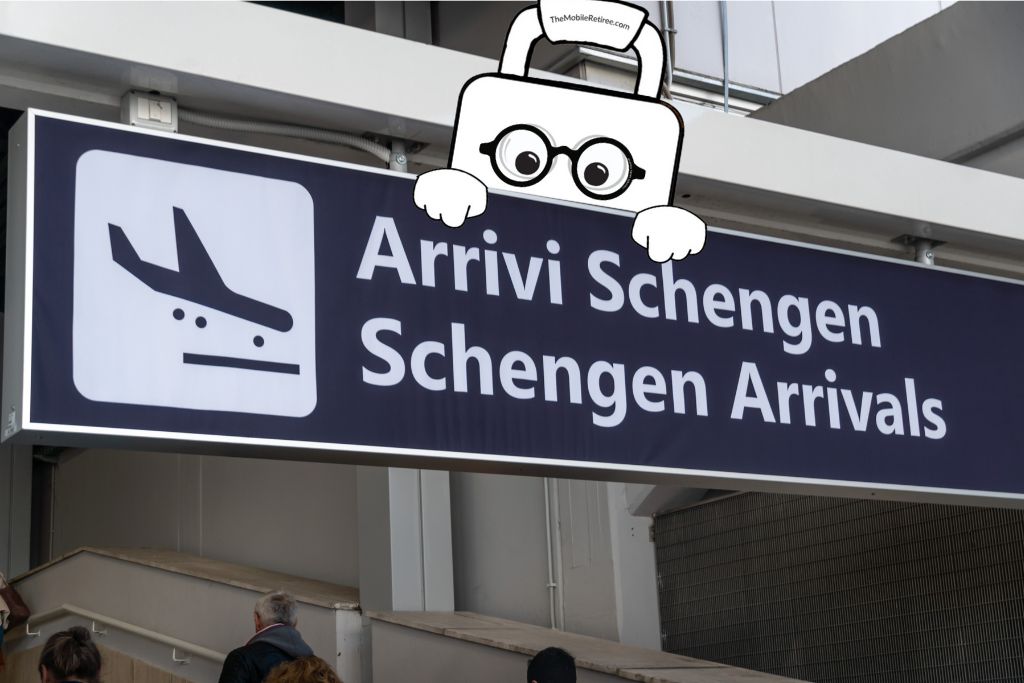Schengenicity 101: Navigating the Complexities of Extended Stays in Europe
We are full-time travelers, nomads. Our retirement lifestyle takes us around the world and part of our mission is to share the lessons we learn along the way. From the moment we decided that our retirement would be as one long ‘road’ trip, we have researched and investigated. We approached retirement as a project where we can learn and teach as we go. We’ve been there before… we actually live abroad for several years… but one of the first things we learned about travel to Europe is; things have changed. If you have plans to travel to Europe as a US Passport holder, one important thing to be aware of is the “Schengen Zone” .
In this post, we share what we have learned over the last few months, drawing from our firsthand experiences and up-to-date research. We’ll guide you through its implications for long-term travelers, common misconceptions, and strategies to navigate these rules effectively. Whether you’re a fellow retiree, a digital nomad, or simply planning an extended European adventure, understanding ‘Schengenicity’ is key to maximizing your travel potential.
Did you know?: The Schengen Zone is really the Schengen Area . The term “Schengen area” is more commonly used in official documents and by governmental organizations, while “Schengen zone” is used more frequently in less formal situations.

Okay, what is the “Schengen Zone”?
First, let’s talk briefly about what the Schengen Area is NOT – The Schengen Area is NOT synonymous with Europe, the European Union or the European Economic and Monetary Union (frequently referred to as the ‘Eurozone’). Each of those terms represents a different grouping of countries.
What the Schengen Area IS, is a group of 29 (as of today, 17Jul24) countries that have essentially abolished internal border controls to allow ease of travel between member countries.
In the US it is almost always referred to as the ‘Schengen Zone’ . While that is technically incorrect, everyone knows what is being referred to so let’s don’t get hung up on the language.
What difference does it make to me as traveler?
As US passport holders we are used to having ‘tourist privileges’ of 90 days or more in almost every country we visit. There is a massive list of countries that allow a US Passport holder to just show up and be more or less automatically approved for a 90 day visitor visa. There is no requirement to apply for a visa in advance.
European countries treated us that way for many years. The Schengen agreement changed all that. Many Americans are still under the misperception that since they are allowed entry into most Schengen countries for ‘up to 90 days’ and that visiting to a different country will somehow reset the clock. In other words, Italy grants a US Passport holder visa free entry for up to 90 days as a tourist. France also grants a US Passport holder visa free entry for up to 90 says as a tourist so, the thinking goes, if you move from Italy to France, your 90 days starts over.
That WAS the case prior to the Schengen Agreement. However, those allowances exist outside the Schengen agreement which restricts us to 90 days within the Schengen Area. When we left Portugal into Spain we didn’t stop and get ‘checked in’ to Spain. When our train entered France from Spain there was no customs and border patrol desk; no immigration forms to fill out.
Rather than being granted visa free access to each country, we are now granted access to all the countries within the Schengen Area, but we are restricted to spending no more that 90 days (out of each 180 days) within the entire Schengen Area.
This is counter to what we are used to in most countries. Most simply say ‘up to 90 days’ and that is loosely enforced. Especially in central America and Southeast Asia, thousands upon thousands of US citizens are spending years at a time in a foreign country by leaving for a day or 2 every few months thereby resetting their 90 day clock. (We do NOT recommend the ‘Border runs’ strategy, BTW)

How can the Schengen Agreements affect my future plans?
Something else to keep in mind when making plans to travel within Europe, is that the Schengen Area is growing. The 2 most recent signatories were admitted just a few months ago.
Schengen rules are very specific and very well enforced. If you stay in for 90 continuous days, you need to stay out (of the Area) for at least 90 days to reset the clock.
If you are moving in and out of Schengen, keep meticulous records of the dates when you enter and leave. Remember, a Day counts whether you spent the whole day or not; if you enter at 11:57 pm, that day counts against the 90. Similarly, if you depart at 00:15, that counts as a day against the 90. If you are on a cruise and the ship pulls into a Schengen Area port, it counts against your 90 days
What if I just ignore it?
Overstays in Schengen can lead to fines as well as restrictions to re-entry. The immigration officers have a good amount of autonomy in deciding what punishment to mete out for an overstay. They can ban you from re-entry for a set period or simply ban you from re-entry, period.
The modern nomad needs to become adept at the Schengen shuffle in order to spend extended periods in Europe. To ‘reset the clock’ you must travel outside the ‘Schengen Zone’ to Albania, Turkiye, England or wherever. As you transit also be aware that a stopover or layover in a Schengen zone uses a day. If you fly from Tirana to London with a change of planes in Rome, you’ve technically used one day of your Schengen allowance – coz Rome is in the Schengen Area
Official Schengen Area Resources and Tools:
- Schengen Visa Calculator (Official EU tool)
- European Commission – Schengen Area
- EU Immigration Portal
The Schengen Area shapes how we travel in Europe. It sets limits. It creates challenges. But it also opens doors. Learn its rules. Use them to your advantage. Plan well. Track your days. Explore beyond Schengen borders. The continent waits for you. With smart moves, you’ll see more of Europe than you dreamed. Now go. Make your own path through this new landscape. Your adventure starts here.
Traveling Soon?
Checkout these helpful resources!
👉Don’t forget to grab your Free Itinerary Checklist
